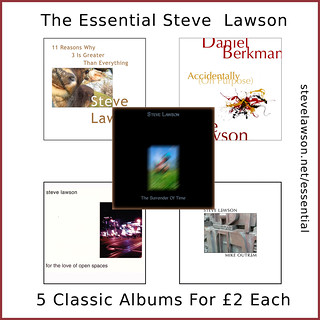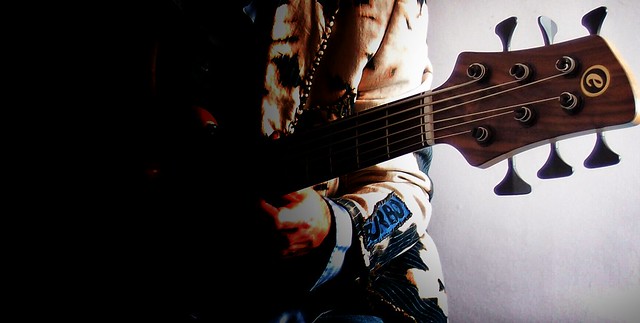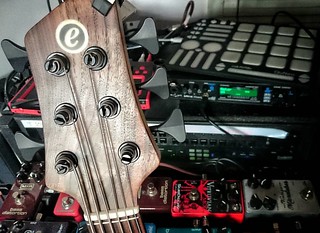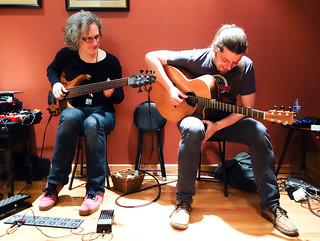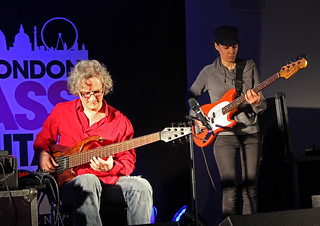 For years – perhaps decades – I’ve said that ‘instrumental music is what happens when I run out of words’. I love words, I love what language makes possible, and my default position is always ‘talk more, listen more, don’t give up on dialogue’.
For years – perhaps decades – I’ve said that ‘instrumental music is what happens when I run out of words’. I love words, I love what language makes possible, and my default position is always ‘talk more, listen more, don’t give up on dialogue’.
But I hit a point on Monday when the barrage of shrill voices on social media (NONE of it targeted at me, I hasten to add) – people with plans, schemes, ways of interpreting what’s going on, insider knowledge, spiteful interpretations, thoughts to counter the spite, arguments with, from and between politicians… it just became a cloud of shouting. Like a montage from a David Lynch movie meant to represent the dreams of an insane person. Or the set up for a Peter Gabriel-era Genesis song. Talking loud, saying nothing. The intentions were mostly good, but were also mostly desperate, reactive, non-reflective, and lacking in care.
At this point, I thank God that I am, at heart, an improviser. That I’ve built a music practice around responding to now with sound, around being able to step into that instinctive, mystical space – not having to sit and painstakingly compose music that reflects how I feel and then play the music I’ve written…(there are people who do that brilliantly, and I’m grateful for their art and the guidance I’ve received from it through the years).
My need is to sort through ideas, emotions, reactions… sadness, anger, confusion, hope, clarity, absurdity, more anger…and music is where I go to do that.
Sharing it is how I throw a line out to anyone else who connects with it. It’s a pretty exposed thing to do, as there’s pretty much no way to counter a response of ‘you’re just playing any old shit and saying it’s about whatever you want…’ – but that’s also a discussion that’s so utterly pointless I wouldn’t enter it anyway…
What is true right now is that I’ve pretty much run out of words, and I’ve exhausted, to a large degree, my need for other people’s words to try and make sense of what’s going on. We’re in a massive downward spiral, and there are many ways of seeing a bright future in a crystal ball, or predicting the collapse of civilization as we know it. I don’t need that kind of guesswork, I need to stay in touch with the emotional/spiritual side of this, and then harness that to actually DO things to help the people whose lives are changed by this. Because, as well as being my refuge and place to ‘heal my hurts’, as Faithless put it, music is a constant challenge to me that music isn’t enough. To take that inspiration, that comfort, and go do something for those who are really messed up by this. Because as a white dude born here, with an accent rooted in the UK, I’m not at risk. Our financial position, in the longer term, is pretty precarious, but that’s not even close to the fear that all the amazing people who have chosen to make the UK their home and are now facing a rapid increase in racist abuse are feeling.
So, make music, then use the inspiration of the music to change the world around you. It’s as simple as that, and as complicated as that.
So how does this play out? A lot less time on social media, for sure. I need to train myself not to get on Twitter of Facebook expecting the sum of the shared ideas to bring clarity. It won’t. I need to spend time every day making music that reflects how I feel about what’s going on. This weekend, I released ‘Referendum’ – 6 tracks directly reflecting on what’s been going on. 4 from before the vote, 2 from after.
The Pre-Order Plan:
I’m currently working on the follow up to last years A Crack Where The Light Gets In and The Way Home, but it felt important to get these works out now. You can listen to that, and buy it if you want. If you want to ‘pre-order’ the new album, please Subscribe via Bandcamp – it’s £20 a year, you’ll get about 23 albums and 4 singles immediately (everything solo I’ve ever released, and a collection of subscriber-only collaborations from the last 2 years), and everything I release in the next year. Which will include a series of subscriber-only video previews of the new music as it happens. The first of those videos went up today.
I’m not doing any other kind of crowd-funding campaign for the new album, there are no ‘tiers’, no attempt to get you to increase your contribution, or sell you stuff you don’t want or need. There’s just music, lots of it, and you can pay £20 or as much over that as you want… It’s entirely your choice. The subscription model fits my music-making so well, and the response from the subscribers so far has been amazing.
I’m so grateful for their support, and the feedback that happens on the Subscriber feed on Bandcamp. Please sign up and join in.
This is the future of sustainability for niche music. Be a part of it.
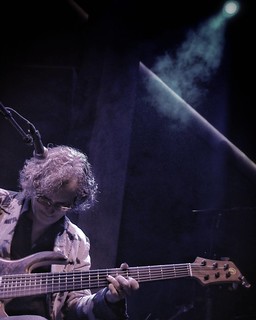 2016 was a really interesting year for music for me:
2016 was a really interesting year for music for me:
